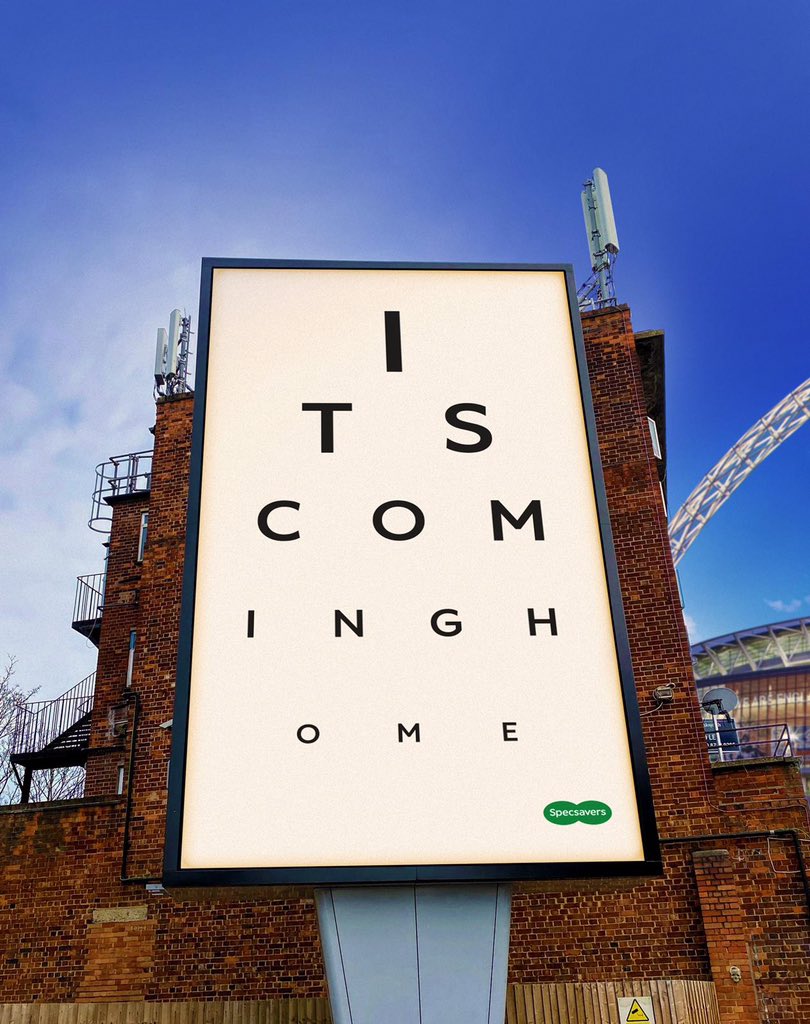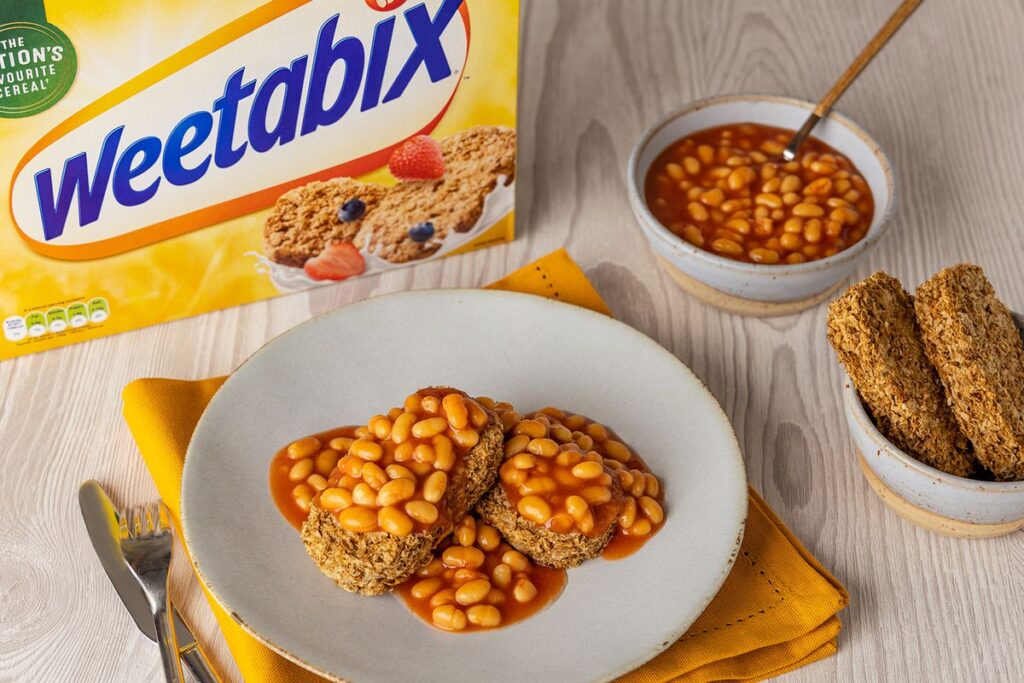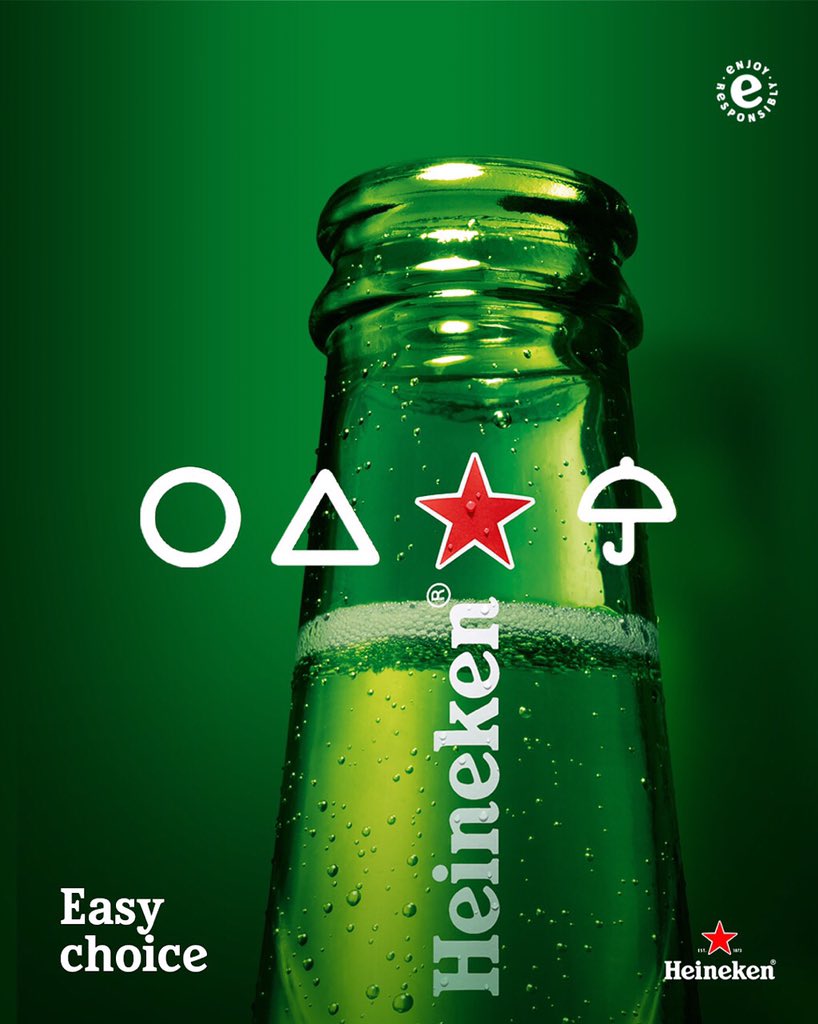want expert advice on your website? get in touch for a free website audit
book your free website audit
What Is Reactive Marketing?
Reactive marketing is a strategy used by marketers to respond to current events or trends to gain attention and make an impression on their audience. This can be in the form of hopping onto the latest social media trends, creating a billboard to represent the current political climate, or creating content on the latest news. Being reactive is a great way to keep content fresh, relevant, and ready to ignite conversations.
The main goal of these campaigns is to cash in on a moment or situation that can be used to the brand’s advantage. It’s all about spotting and identifying opportunities and moving fast to engage with your audience. Despite how time-sensitive this marketing technique is, it is a surefire way to get your brand noticed when done correctly. People love reactive content, so getting it right is crucial for your business.
Time is everything when it comes to reactivity and you may feel like you’re walking on a tightrope in terms of timing. You have to make sure you respond quickly because if you end up missing the timing window, your content can seem outdated and stale. Your audience might also start to see that your brand is stuck in the past – you’re talking about yesterday’s topic while they’re already on to the next big thing.
Benefits Of Reactive Marketing:
- Future-proofing your brand: Reactive marketing is a killer way to demonstrate that your business is ahead of the curve. It paints you as a company that is reliable and knowledgeable about what is occurring in the world. Being quick to react shows you’re not afraid to take risks and push boundaries.
- Get more eyes on your business: Struggling to get people to talk about or even look at your brand? Reactive marketing could be your ticket to garner some attention and get people talking about your brand. Whether it be a humorous or serious campaign, it will help to build brand awareness through shareable content, spreading your brand’s message far and wide.
- Target a different audience: Chances are that those engaging with your content are already your loyal customers, aka your target audience. Reactive marketing will help you get the attention of those outside of your usual crowd. By talking about topics you don’t normally cover, you’ll gain the interest of people who might’ve never given your brand a second glance. This will help to draw people in because you’re addressing topics that pique their interest.
- Humanise your brand: Another advantage of reactive marketing is it gives you the ability to add a human touch to your brand. By responding to current events or trends in a timely and authentic way, businesses can show their audience that there are a group of real people behind the logo, who care about what is happening in the world. This human touch can help to build trust with consumers and strengthen the emotional connection they have with your brand.
- Stay ahead of the competition: What’s great about being reactive is that it can give businesses a serious edge over their competition. Being the first to respond to a trend or event makes you seem as the go-to expert in your field, which sets you apart from the rest. And in crowded markets where everyone’s fighting for people’s attention, this kind of standout move can make all the difference.
How To Ensure Your Reactive Marketing Efforts Succeed:
Having a solid strategy is crucial, especially because executing reactive marketing campaigns can be pretty difficult. You’ll want to create clear timeframes and specific goals to give you a clear sense of direction. You will also need to be aware of upcoming trends and understand why they’re about to blow up. Keeping tabs on the latest news as well as using social media platforms as a research tool is a great way to identify these latest trends. Plus, subscribing to marketing newsletters lets you peek into how other brands are being reactive.
You may believe that controversy and drama are harmful to a brand’s reputation and are best avoided. But they can actually be used to your advantage. Capitalising on pop culture controversy is an almost guaranteed method to reactive marketing success. Thanks to the rise of “cancel culture”, brands are looking at drama in a new light. These days, when drama hits, it’s all over Twitter with trending hashtags, as well as the countless videos made on TikTok that dissect all the juicy details. Jumping on the “cancel culture” bandwagon shows your audience that you’re tuned into what’s happening and that you’re not afraid to add your two cents to a topic. It also makes your brand seem relatable.
When it comes to capitalising on controversy and drama, tweeting about the latest spicy moments from Love Island is a prime example. If you’re an avid Love Island watcher like me, you’ll know that sometimes the tweets made by other watchers are often more interesting than the actual show. This is why many watchers like me tend to read the tweets while watching the show (making us amazing multi-taskers!). Brands have caught onto this trend and are following suit by putting out tweets related to the show, adding their own unique spin, and linking it to their products. These tweets often rack up many likes and retweets sparking conversations that spill over onto platforms like LinkedIn the next morning. The trick to their success lies in ensuring they’re putting out tweets while the show is airing. With Love Island airing daily, being even a day late will make the tweet seem outdated.
It’s also important to understand the target audience of a trend before diving in. If your target audience doesn’t align with the trend’s audience, your campaign could totally miss the mark. A good example of this is if your target audience mainly consists of people who are over the age of 50, trying to hop on to a TikTok trend meant for Gen Zers would likely leave you with some puzzled looks. Don’t jump on a trend just because it’s popular. Make sure it vibes with your audience, or you might end up with a campaign that falls flat.
Implementing Reactive Marketing Strategies:
The role of digital marketing in reactive strategies:
When it comes to reactive strategies for marketing, digital marketing tools play a huge part in helping marketers adapt quickly. With digital platforms and tools at our fingertips, it helps us stay agile and respond in real-time to whatever curveballs the world throws our way. One key aspect of this is social media channels. Keep an eye out on social media and online conversations to gather public sentiment to tweak your campaigns accordingly.
Marketers can also use the latest search engine optimisation technique (SEO) to remain reactive in search results. This helps to make sure your brand stays front and centre on search engine results pages (SERPs), even with changes like algorithm updates and the rise of AI-powered search.
Plus, digital marketing lets you quickly deploy targeted ads or promotions so that you can seize those emerging opportunities as soon as they pop up. And thanks to real-time data analysis, you’re able to stay on the ball, knowing exactly where to focus your energy for maximum impact.
Making Use Of Social Media Platforms:
If you’re looking to implement reactivity in your marketing plan, social media platforms will be your best friend. Monitoring social media channels for the latest conversations and hottest news events can be a game-changer. You’re able to quickly jump on any trend and share content in a flash so you can be a part of conversations while they’re still hot.
One major perk of using social media is the massive reach it offers. With millions of users active on platforms like Twitter, Facebook, and Instagram, you get a chance to create a serious lasting impression with your content.
You may also like: 11 Costly Social Media Marketing Mistakes to Avoid!
The Risks Of Reactive Marketing:
With great rewards also come great risks. It’s important to think before putting out your marketing campaigns to understand how the audience will perceive your message. Speed is definitely key but pulling the trigger straight away can be extremely detrimental to your brand. Your brand tone matters. Coming off as insensitive, especially during serious moments can make it seem that you’re a business that’s only interested in grabbing people’s attention rather than respecting others’ boundaries.
An example of a brand that completely missed the mark was Cinnabon. After Carrie Fisher’s tragic death, the brand put out a tweet saying “You’ll always have the best buns in the galaxy.” This tweet left a very sour taste in people’s mouths and due to the backlash they had faced, they deleted the tweet just 45 minutes later. Cinnabon has since apologised. Despite the tweet being deleted from Twitter, I believe this marketing failure will go down in history as an example of how not to carry out reactive marketing.

Brands who have nailed reactive marketing:
Specsavers: It’s Coming Home:

Specsavers are known for their clever reactive marketing campaigns, spanning from their witty tweets to their eye-catching billboards. But nothing quite takes the cake like their “It’s coming home” Euros campaign which mimics the style of eye charts found in opticians. The campaign was to commemorate how far England had progressed in the Euros and was a great way to show their support for the team. This simple yet clever way of spreading the message got people talking, and the combination of a clean white background with their iconic green logo made it instantly recognisable..
Weetabix x Heinz Beans:

Weetabix stirred up quite the commotion when they tweeted a picture of their cereal topped with Heinz beans. The bizarre combination of foods had people disgusted and intrigued at the same time. It sparked a lot of conversations on social media channels, with even well-known brands such as Dominos and Specsavers jumping on the bandwagon to comment on the very disturbing image.
Heineken: Squid Game:

During the rise of the hit TV show Squid Game, brands across different industries were looking for creative ways they could tap into the show’s popularity. One of those brands was Heneiken. In Squid Game, there’s a memorable game involving Dalgona candy and shapes like circles, triangles, stars, and umbrellas. The game is based on a childhood activity popular in South Korea during the 60s and 70s. Contestants had to carefully carve out their chosen shape without breaking the candy.
Heineken cleverly leveraged these iconic shapes in a campaign with the tagline “The best pick.” It was in reference to their logo which features a star, indicating their beer is “The best pick.”
You may also like: The Best Marketing Campaigns Of 2023!
Tools and Resources To Help Your Reactive Marketing Campaigns:
Reactive marketing can be difficult, but having the right tools in your arsenal can make it 10x easier. Monitoring tools such as social listening platforms and Google Alerts help you stay on top of the latest trending topics. These tools alert you to prime opportunities by delivering them straight to your inbox. This will save you a tonne of time as you no longer need to actively scour the web, it’s all right there in front of you.

Once you’ve got the information you need, you then need to pair that information with an eye-catching graphic. Content creation tools such as Canva or Adobe Express can help you quickly whip up stunning visuals to make sure your content stands out.
Lastly, let’s not forget the most important tool of all: knowing your target audience inside and out. Having a solid understanding of their preferences and behaviours can help you tailor your message and content to ensure they hit the mark every time.
Common Reactive Marketing FAQs:
FAQ: What is the difference between reactive and proactive marketing?
As I’ve discussed above, reactive marketing is a type of marketing strategy which is all about being spontaneous and responding to what’s going on in the moment. Whether it’s a viral trend, breaking news, or industry change. It moves quickly, and it’s all about grabbing onto those immediate opportunities.
On the flip side, proactive marketing is like the strategic counterpart to reactive marketing which involves getting ahead of the game by predicting future trends. The aim of this strategy is to always be three steps ahead with your marketing. So, how can you pull it off? Well, you need to dig deep and seek out new markets. Proactive marketing requires a deep understanding of the market and your customers, and in the long run, it’s often seen as the more sustainable option compared to reactive marketing.
FAQ: When Is It Best To Use Proactive Marketing Over Reactive Marketing?
If you’re looking to build a strong brand and create lasting relationships with your clients, proactive marketing is the way to go. This strategy is key to turning your businesses into a well-known brand. Not to mention, companies can also come across as industry leaders to their audience.
However, if you’re looking for a strategy that makes your brand relevant in the moment, reactive marketing will help you shine. This technique is best used to gain attention to your brand by capitalising on specific events of situations. The issue with reactive marketing is that it often falls short in the long haul.
Unlike proactive marketing, which is a sustainable strategy that supplements a business’s growth, reactive marketing campaigns don’t offer the same lasting results. This is because they’re often super time-sensitive and only relevant for a short window of time.
FAQ: How Can Brands Make Sure Their Reactive Marketing Efforts Align With Their Overall Brand Image And Message?
To make sure your reactive marketing efforts align with your brand image you need to first define your brand identity and values. Be crystal clear with who you are and what you stand for.
Once you’ve got that down, the next step is to monitor the current trends and events. You need to be ready to pounce at any opportunity that fits your brand’s vibe and values. You should also consider how the messaging will be perceived by your target audience. Is the message going to be a hit, or is it going to fall flat?
It is also crucial to have a clear approval process in place to make sure every reactive move is on point and remain consistent with your brand’s messaging and values. I recommend cross-referencing between your brand guidelines and your reactive marketing campaign to make everything match up.
FAQ: What Are The Key Elements Of A Successful Reactive Marketing Campaign?
Here are couple key elements to keep in mind in order to run a successful reactive marketing campaign:
- Speed: Speed is everything. The quicker your brand reacts, the bigger the impact.
- Creativity: Being creative helps you stand out from the crowd and draws people in.
- Planning: Every type of campaign needs some careful planning and execution, and reactive marketing campaigns are no exception. You need a clear understanding of your company’s values and make sure every move fits into your overall strategy.
FAQ: How Can You Measure The Success Or Effectiveness Of A Reactive Marketing Campaign?
To understand if your reactive marketing is effective, there are a bunch of ways to measure its success. One key method is by monitoring analytics. Tracking important metrics such as website traffic and social media engagement can give you a solid idea of how things are going.
Another way to measure effectiveness is by checking what people are saying about your brand. If the feedback is positive and you’re getting more brand mentions than ever, chances are you’re onto something good.
FAQ: What is reactive relationship marketing?
Reactive relationship marketing is a strategy that involves interacting with customers in real-time. The goal is to make your customers feel heard to bring stronger relationships with them. The way you communicate is focused around those quick, personalised responses that show customers you’re more than just a business.
Social media platforms are great channels for implementing reactive relationship marketing. It provides businesses with a direct line to their customers. So, when someone shoots them a message or leaves a comment, they can take action and have meaningful conversations.
When done right, this marketing technique can create a positive experience for customers that keeps them coming back for more.
